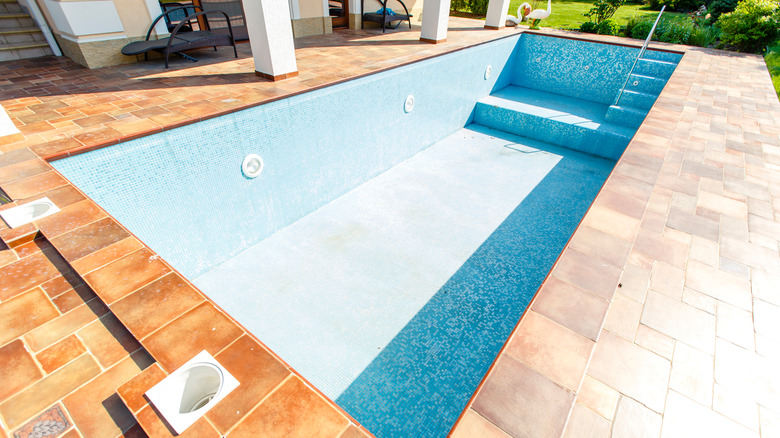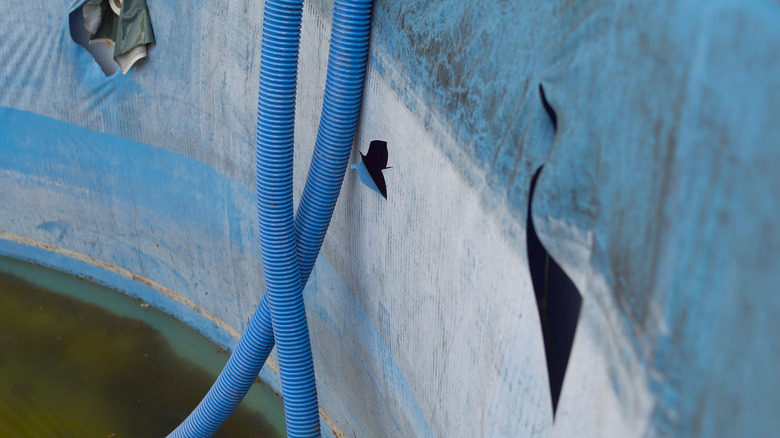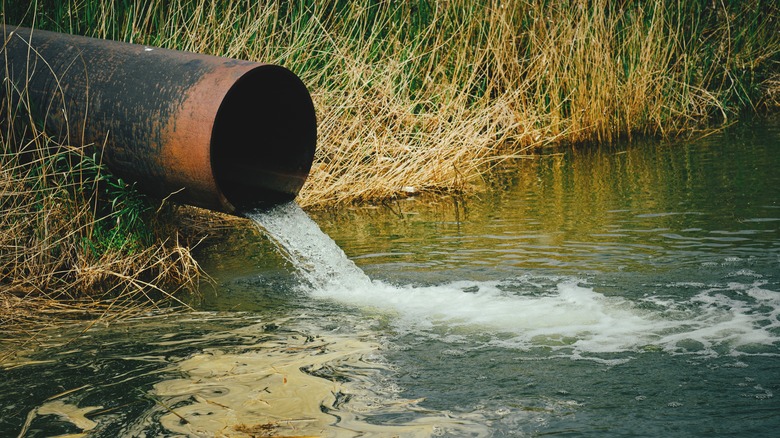Why You Shouldn't Drain Your Pool During The Winter
When the days of going to the beach, camping, and swimming end, it's time for the cold season to reign. Therefore, consider taking care of the outdoor furniture to survive the winter weather, including the swimming pool. You might think the pool won't need any attending, but it needs to be prepared and protected, claims Swimmingpool. It could be easier to drain the water, leave it empty, and refill it again in the summer, yet that isn't the best option either. Clearing out the water could damage the entire pool.
Instead of draining the pool, put a cover with a sign that says "closed for the winter" to close it. Make sure it's secure at every corner so that debris or snow doesn't make its way inside, claims Swimmingpool. In addition, ensure the pool parts, such as the pumps, are completely clear of water so that it doesn't freeze and damage the pipes. You want your pool to last for years, especially for an above-ground option, so giving it the proper care will guarantee a longer lifespan. If you're thinking about draining the water in the winter, here are a couple of reasons you shouldn't.
It causes cracks and rips the liner
When a swimming pool is left empty for too long, damages can occur over time that could be expensive to fix. Since pools hold water, it's the one thing that keeps them from falling apart. Poolonomics claims that water prevents the pool from lifting off the ground due to pressure and weight. Without anything holding down the pool, it can damage the entire structure, such as the liners, walls, deck, and floors. For an above-ground pool, instead of lifting, the inside can deteriorate.
If a pool doesn't have water but also doesn't have a cover, the sun can beat down on the inside and cause the liner to fade and crack, per Poolonomics. Once the liner is damaged, it can be expensive to replace or repair. According to Fixr, the liner's repair cost could be between $175 and $5,000. For example, a small leak in an inground pool can range from $100 to $5,000, while an above-ground pool ranges from $100 to $300. If the liner needs replacing or a repair, the pumps or pipes might have some issues that need fixing too (via Fixr). Repairing the pool pipes can cost $500 to $900 on top of fixing the liner. There are also other types of inground pools that have various prices. The price can vary based on the size of your pool and how extensive the damages are.
Refilling pool wastes water
Emptying the pool means, at some point, it will have to be refilled. While refilling the pool doesn't take too much time, it can be detrimental to the environment. Since the water is contaminated with different chemicals, draining the water can get into the draining system and later into the rivers and creeks, per the City of Weldon Spring, Missouri. Draining the water every winter will cause more pollutants to be exposed to the environment, hurting anyone drinking the water, like animals. Furthermore, draining and refilling the pool wastes gallons of water.
If the pool is regularly cleaned, the water won't need to be replaced for years. A pool's water should be drained and refilled every five to seven years by a pool maintenance company, claims Pool and Patio Pros. Not hiring a professional is an easy mistake when it comes to buying a pool or getting one repaired. They know everything about pool maintenance and will reduce the risk of environmental damage since they know the right way to drain the water. In addition, allowing a professional to clear out the water will prevent damage to the entire pool parts, like the pipes and filters. Instead, keeping the pool filled and leaving the chemicals will keep the pH levels balanced so that it's easy to open back up and use in the summer.



